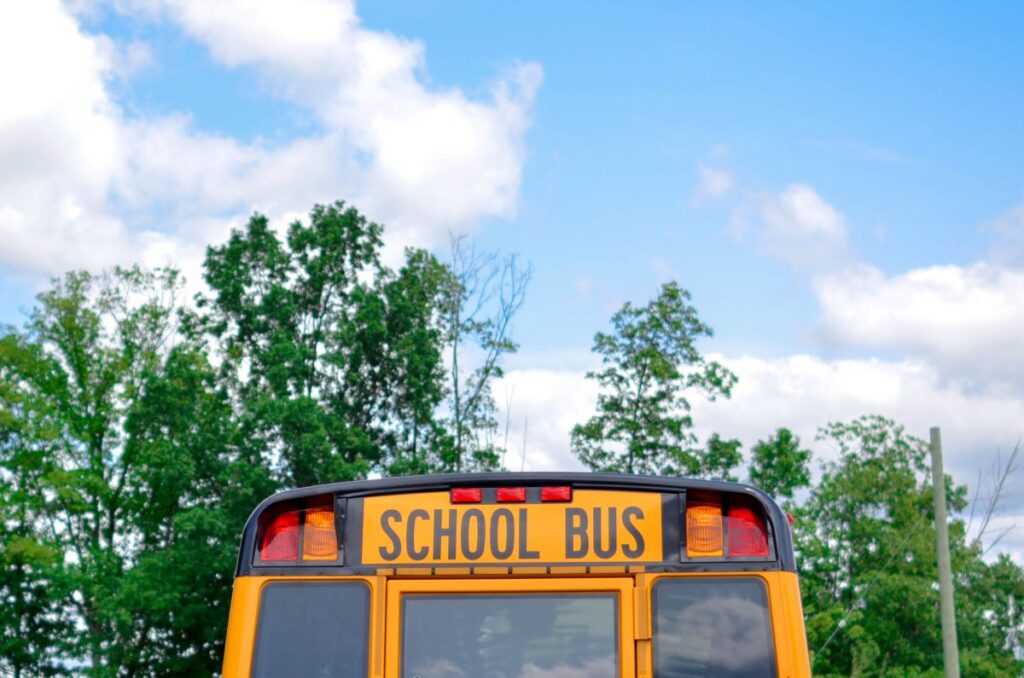
The number of children and young people with mental health conditions in the UK is increasing. A worrying one in six young people identified as experiencing mental health conditions in 2020, in comparison to only one in nine in 2017 (NHS Digital, 2020). Furthermore, the difficulties and dramatic changes associated with the coronavirus pandemic have only highlighted the need for increased support and alternative options that were already badly needed. Indeed, many young people have reported that their mental health has worsened due to the coronavirus pandemic (Young Minds, 2020).
The various restrictions, diagnostic criteria and costs that determine access to mainstream mental health services can act as a barrier for young people trying to access support (Snell et al., 2013). These findings, amongst others, have prompted exploration of alternatives that can be offered outside of mainstream provision and within the school setting.
Humanistic counselling for young people focuses primarily on building a supportive therapeutic relationship and guiding individuals towards solving their own problems (Hill, Roth & Cooper, 2013). It is commonly used within schools (Harris, 2013), however, there is little evidence of its effectiveness (Cooper et al., 2021).
In a recent randomised controlled trial led by Prof Mick Cooper (2021), a comparison was made between school based pastoral care as usual versus school based pastoral care with the addition of humanistic counselling. To the authors knowledge, this was the first effectiveness and cost-effectiveness trial of school based humanistic counselling in the UK.

Humanistic counselling is often offered to young people in schools, yet there is little evidence of its effectiveness. This study is the first trial to explore the effectiveness and cost-effectiveness of this intervention.
Methods
Participants were pupils between the ages of 13-16 who scored five or above on the Strengths and Difficulties Questionnaire (SDQ), Emotional Symptoms scale, (Goodman, 2001), which suggests moderate to severe psychological distress. Participants were also required to have at least 85% attendance (to improve adherence) to be included. Participants were recruited from 18 Greater London State Schools.
The participants were individually randomised to one of two conditions:
- School based humanistic counselling (SBHC) plus schools’ pastoral care as usual (PCAU)
- Schools’ pastoral care as usual (PCAU) alone
SBHC sessions were delivered by counsellors, who had attended four days of training and were standardised by the use of a manual. PCAU was not standardised as it differed across schools, but generally included allocated time with a school support staff member.
The randomisation was concealed to assessors and testers, managed centrally via a secure randomisation procedure. Follow-up tests were carried out at 6, 12 and 24 weeks, by researchers unaware of allocation.
The Young Person’s Clinical Outcomes in Routine Evaluation (YP-CORE) was the primary outcome used at 12 weeks to measure self-reported psychological distress. It was also used as a secondary outcome at 6 and 24 weeks.
Cost-effectiveness was explored with a net-benefit approach. YP-CORE scores at baseline and then again at 24 weeks were compared to assess whether any increases determined cost-effectiveness.
Results
A total of 329 participants made up the final sample, with 51% randomly assigned to SBHC plus PCAU. Retention rates were high with 98% overall, 96% at six weeks and 93% at 24 weeks.
Primary outcome
At baseline, the YP-CORE mean scores were similar between SBHC plus PCAU (M=20.86, SD= 6.83), and PCAU alone (M=20.98, SD= 6.41).
At 12 weeks, the YP-CORE mean scores were: SBHC plus PCAU 16.41 (SD 7.59), and PCAU alone 18.34 (SD 7.84), with a difference of 1.87 (95% CI 0.37 to 3.36; p=0.015), and a small effect size (0.25, 95% CI, 0.03 to 0.47).
Secondary outcome
The reduction in distress associated with SBHC plus PCAU found at 12 weeks was maintained at 24 weeks.
Furthermore, SBHC plus PCAU led to improvements in self-esteem and mental wellbeing.
The type of intervention was found to have no significant effects on: pro-social behaviour and emotional symptoms (SDQ), depression and anxiety symptoms (RCADS), student engagement, behavioural engagement or educational outcomes.
Cost effectiveness
The cost analysis found that SBHC plus PCAU is unlikely to be determined cost-effective. At 24 weeks, the overall cost for SBHC plus PCAU per pupil was estimated at £995.20 (SD 796.86), in comparison to a lower £612.89 (SD 1224.56) for PCAU alone.

Although the difference was small, young people receiving school-based humanistic counselling reported a higher reduction in psychological distress than those receiving pastoral care as usual.
Conclusions
The authors concluded that:
The addition of SBHC to PCAU leads to small reductions in psychological distress, but at an additional economic cost. SBHC is a viable treatment option but there is a need for equally rigorous evaluation of alternative interventions.
Furthermore, it was noted that it is important to continue exploring alternative options in managing the mental health of children and young people, perhaps through the addition and evaluation of alternative models, such as Cognitive Behavioural Therapy (CBT), to PCAU in schools.

School based humanistic counselling was found to be effective in reducing psychological distress, however, was not deemed to be cost effective.
Strengths and limitations
To the authors knowledge, this was the first effectiveness and cost effectiveness trial of school based humanistic counselling (SBHC) in the UK. The randomised controlled trial was well designed, addressing a clearly focused research question (whether the addition of SBHC was useful and cost effective) and taking and reporting a good amount of pre- and post-treatment measures alongside the primary outcome measure of self-reported psychological distress. These covered a wide range of concepts, such as educational outcomes and self-esteem. The population was focused, with strict inclusion criteria, such as an 85% school attendance record to increase adherence.
The allocation to each intervention was completely randomised and concealed, with assessors and testers both unaware. The concealed allocation strengthened the research as it reduced the risk of selection bias. Of note, the pupils who were not initially offered SBHC plus pastoral care as usual (PCAU) had the chance to receive the treatment following the trial, increasing participation benefit by allowing everyone a chance to access the treatment.
There were various limitations within the sample that may have led to a lack of representation in the research. For example, the authors highlighted that the ‘worst cases’, such as children missing a significant amount of school due to severe mental health difficulties, may have been excluded due to the 85% attendance criterion. However, although there may have been a lack of generalisation to those with severe mental health difficulties, participation may not have been appropriate or ethical at this level of psychological distress. Furthermore, the sample was restricted to state schools from the Greater London area with particularly high levels of social deprivation, restricting generalisability to other schools across the UK, or indeed other countries and cultures.
Finally, as the primary outcome measure of psychological distress was self-reported and participants were quite young (13-16 years), it is possible that they may have felt an internal pressure to report improvements across both conditions. The research also used a variety of pre- and post-measures, with some collected at as many as three time points. It is therefore plausible that order effects could have been a problem, with participants experiencing fatigue or boredom.

The pupils who were not allocated to receive school-based humanistic counselling had the chance to receive the treatment following the trial, enhancing the participation benefits of the trial.
Implications for practice
Impact on practice
This trial found that school based humanistic counselling (SBHC) was not cost-effective. In terms of effectiveness, the difference between treatment groups, although in favour of SBHC plus schools’ pastoral care as usual (PCAU), was small. SBHC is therefore a viable treatment option to be used in schools, but there is a need to explore alternative models that could be more cost-effective.
The adapting of alternative models, such as CBT, for delivery in school-based counselling could potentially reduce the strain on mainstream services. Although the research did not find SBHC plus PCAU to be cost effective, the authors have highlighted the need to explore alternative models as a matter of urgency.
Future research
Additional research including a wider range of schools across the UK, both state and privately funded, from a range of socio-economic backgrounds is warranted in improving the generalisability of the research to children and young people across the UK.
Considering the coronavirus pandemic, and how many young people have reported that it has had an impact on their mental health (Young Minds, 2020), it would make sense to explore alternative school-based counselling options that would directly address issues related to the pandemic as well as meet the increased demand for support from young people.
A closing reflection
In my own clinical experience of working with children and young people in schools, I have noticed that pastoral care ‘as usual’ across schools varies so widely and in my personal opinion, can sometimes be inconsistent. The addition and evaluation of alternative models for use in schools, whether that be SBHC, CBT or something else entirely, as the authors have suggested, would feel like the next logical step.
In my opinion, the provision of standardised interventions in schools that do not come with the same barriers associated with accessing mainstream services is necessary. We could provide more children and young people with a fair chance of accessing consistent treatment at a lower threshold, intervening earlier and potentially reducing some strain on mainstream services.

Additional research including a wider range of schools across the UK, both state and privately funded, from a range of socio-economic backgrounds is warranted in improving the generalisability of the research to children and young people across the UK.
Statement of interests
Annie Stevenson works in the NHS with children and young people, as part of the emotional wellbeing team supporting schools.
Links
Primary paper
Cooper, M., Stafford, M.R., Saxon, D., Beecham, J., Bonin, E.M., Barkham, M., Bower, P., Cromarty, K., Duncan, C., Pearce, P. and Rameswari, T., (2021). Humanistic counselling plus pastoral care as usual versus pastoral care as usual for the treatment of psychological distress in adolescents in UK state schools (ETHOS): a randomised controlled trial. The Lancet Child & Adolescent Health, 5 (3), 178-189.
Other references
Goodman. R. (2001). Psychometric properties of the strengths and difficulties questionnaire. Journal of the American Academy of Child and Adolescent Psychiatry, 40 (11), 1337-1345. DOI: 10.1097/00004583-200111000-0001
Harris B. (2013). International school-based counselling. British Association for Counselling and Psychotherapy and Counselling.
NHS Digital (2020). Mental Health of Children and Young People in England, prevalence survey.
Roth, A., Hill, A., & Pilling, S. (2009). The competences required to deliver effective Humanistic Psychological Therapies. University College London.
Snell, T., Knapp, M., Healey, A., Guglani, S., Evans‐Lacko, S., Fernandez, J.L., Meltzer, H. and Ford, T., (2013). Economic impact of childhood psychiatric disorder on public sector services in Britain: estimates from national survey data. Journal of child psychology and psychiatry, 54 (9), 977-985. DOI: 10.1111/jcpp.12055
Young Minds (2020). Coronavirus: Impact on young people with mental health needs (survey two).
Photo credits
- Photo by Priscilla Du Preez on Unsplash
- Photo by Jeswin Thomas on Unsplash
- Photo by Ibrahim Rifath on Unsplash
- Photo by Ben den Engelsen on Unsplash
- Photo by Element5 Digital on Unsplash

Thanks Annie. A really clear and balanced write-up of our study that accurately reflects what we found. I might just add that one of the key limitations of our study was that we were evaluating newly-implemented counselling services, and perhaps embedded services — where, for instance, the pastoral care teams were experienced in knowing who to refer in to counselling — would have shown better outcomes.
There’s lots more details about our ETHOS trial at https://www.roehampton.ac.uk/ETHOS and data are available for further analyses, both quant (via Re-Share) and qual (available on request — see website).